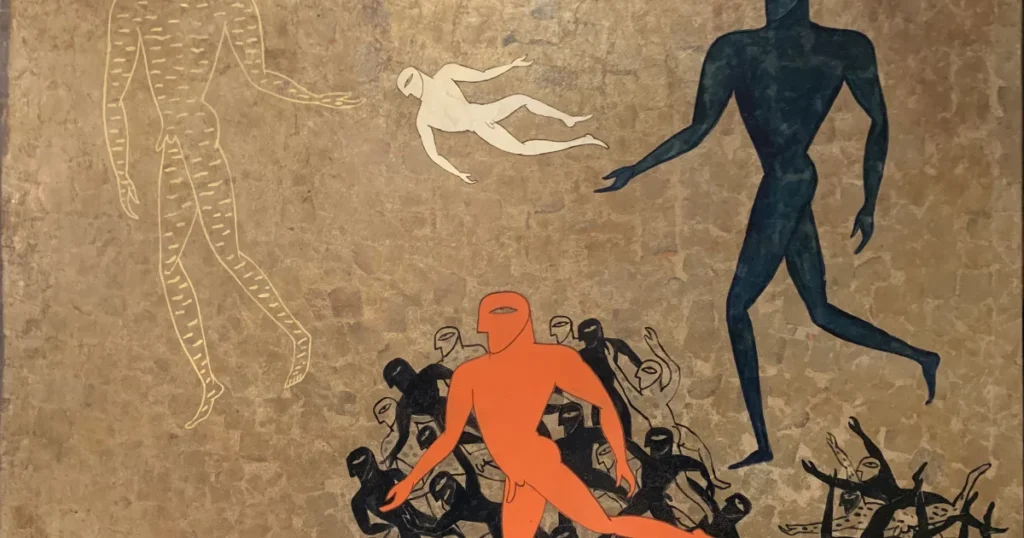Vietnamese art has a rich and captivating history that spans thousands of years, blending cultural traditions with artistic expression. From ancient times to the present day, Vietnamese art has evolved, adapting to changing influences and reflecting the country’s dynamic cultural landscape. Here, we delve into the fascinating journey of Vietnamese art, exploring its journey from its early origins to the modern era. We will uncover the artistic movements, notable artists, and key milestones that have shaped the Evolution of Vietnamese art, creating a bridge between the past and present.
The Evolution of Vietnamese Art and its Milestones
I. Ancient Inspirations
Dong Son Culture and Early Influences
The roots of Vietnamese art can be traced back to the Dong Son culture, which thrived from the 1st millennium BCE to the 3rd century CE. The iconic Dong Son bronze drums served as vessels of artistic expression, featuring intricate motifs depicting daily life, animals, and mythical creatures. Additionally, early Vietnamese art was influenced by neighbouring cultures such as China and the Cham civilization, leading to the incorporation of distinctive stylistic elements and techniques.
Imperial Vietnam
During the imperial eras, particularly the Le and Nguyen dynasties, Vietnamese art flourished under royal patronage. Court art and architecture showcased intricate craftsmanship, exquisite porcelain, and ornate woodwork. Notable examples include the elaborate carvings of the One Pillar Pagoda and the delicate paintings on silk and paper.
II. The Modern Era

French Colonial Influence
The arrival of French colonial rule in the 19th century brought significant changes to Vietnamese art. The establishment of the École des Beaux-Arts de l’Indochine (Indochina College of Fine Arts) in 1925 introduced Western academic art training to Vietnamese artists. This led to the emergence of the Indochinese art movement, blending Western techniques with Vietnamese themes.
Post-Independence and the Đổi Mới Era
Following Vietnam’s independence and the turbulent years of the Vietnam War, artistic expression shifted. The Liberation Art Movement emerged, reflecting the spirit of resistance and patriotism. With the introduction of economic reforms known as Đổi Mới in the late 1980s, artists gained more freedom to explore new artistic directions and experiment with different mediums. The first Avant-Garde group emerged in the West Lake district of Hanoi under Vietnam’s most influential contemporary artists Bui Huu Hung, Le Hong Thai, Truong Tan and Do Minh Tam.
III. Contemporary Vietnamese Art
Traditional Roots in a Global Context

In recent years, there has been a resurgence of interest in traditional art forms and techniques. Artists are embracing traditional Vietnamese aesthetics, including lacquer painting, silk art, and woodblock printing, and infusing them with contemporary concepts and global influences. This approach bridges the gap between the past and present, creating a unique blend of tradition and innovation.
Contemporary Art Movements and Notable Artists

Vietnam’s contemporary art scene is vibrant and diverse, with various art movements and notable artists making their mark. Painters such as Tran Luong, Dinh Q. Lê, Bui Huu Hung and Le Quang Ha embrace experimentation, challenging conventional boundaries with their thought-provoking works. Sculptors like Nguyen Thu Thuy and Vuong Van Thao push the boundaries of traditional sculpture, incorporating new materials and techniques. The emergence of photography and digital media as artistic expressions has also paved the way for artists like Phan Quang and Trinh Tuan, who explore these mediums to convey their messages.
International Recognition and Global Impact
Vietnamese artists have gained international recognition through participation in biennales, international exhibitions, and collaborations with artists from around the world. The diaspora community has also played a significant role in promoting Vietnamese art globally. Furthermore, the growing interest in Vietnamese art has led to the development of a thriving art market, with collectors and galleries showcasing and supporting Vietnamese artists. Some examples include the recent record-breaking auctions hosted by Sotheby’s and Christie’s.
Vietnamese art has undergone a remarkable evolution, bridging the past with the present and embracing both tradition and innovation. Through the preservation of traditional techniques, the exploration of new mediums, and the expression of cultural identity, Vietnamese artists bridge the past and present, creating a dynamic and diverse art landscape. As global recognition and appreciation for Vietnamese art grow, it serves as a testament to the enduring power and significance of Vietnamese artistic heritage. The evolution of Vietnamese art reflects the nation’s resilience, creativity, and ability to embrace change while honouring its rich cultural legacy.

